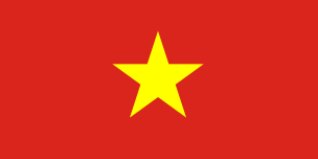Crossing a narrow canal in Hoi An’s UNESCO World Heritage Ancient Town, the Japanese Covered Bridge Hoi An (also known as Chùa Cầu or simply Hoi An bridge) is more than a pedestrian crossing – it’s a cultural icon with centuries of history and mystery.
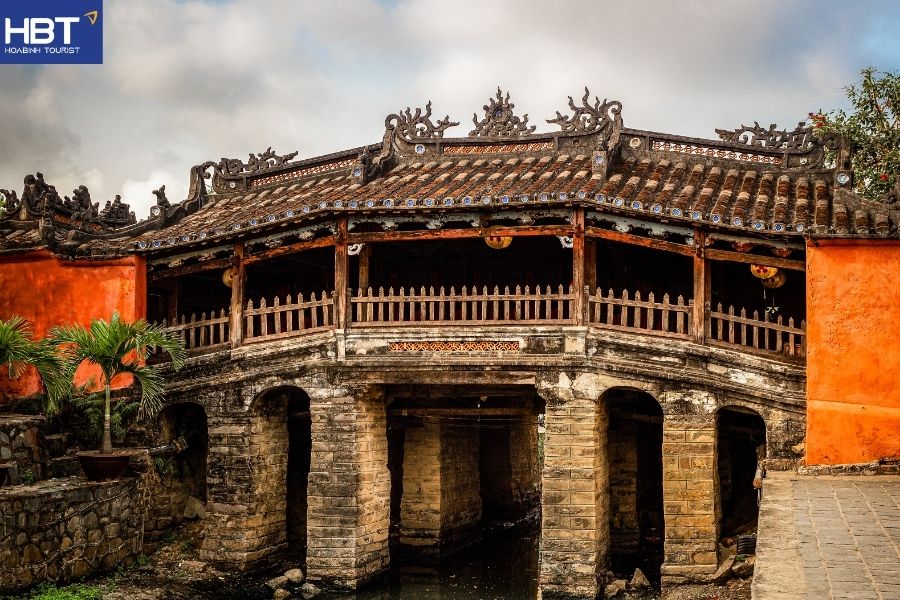
As lanterns glow at dusk, the Japanese Covered Bridge emits a timeless charm at the heart of Hoi An.
Built by Japanese merchants in the late 16th century, this bridge stands as a testament to Hoi An’s heritage as a multicultural port for Japanese, Chinese, and Vietnamese communities. It has been lovingly maintained and remains one of Vietnam’s most photographed landmarks.
1. Introduction to the Hoi An Bridge
The Japanese Covered Bridge in Hoi An – known locally as Chua Cau or simply the Hoi An Bridge – is more than just a foot crossing. This iconic bridge in Hoi An houses a small pagoda dedicated to Bac De Tran Vu, blending cultural symbolism with structural elegance.
Locals refer to it as the “Pagoda Bridge,” a spiritual landmark that unites sacred and communal life in Hoi An’s UNESCO-listed Ancient Town. Viewed at dawn or dusk, its ancient timbers often glow golden in the lantern light, earning it the visitors’ affectionate term “golden bridge Hoi An”.
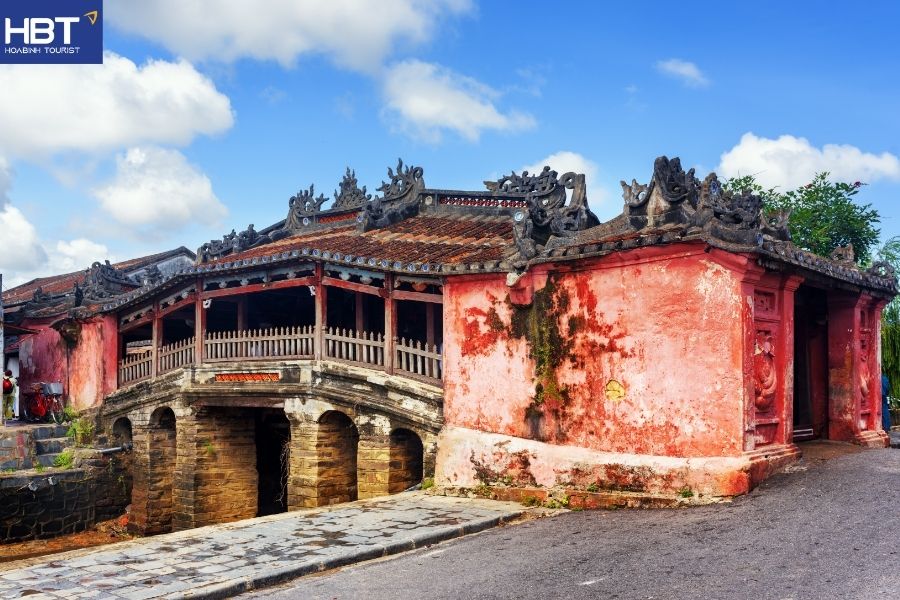
A peaceful shrine at the heart of Chua Cau embodies Hoi An’s blend of spirituality and tradition.
1.1. Location
Spanning a narrow canal off the Thu Bon River, the Hoi An bridge connects Tran Phu Street and Nguyen Thi Minh Khai Street, anchoring the town’s cultural crossroads. At around 18 m long and 3 m wide, Chua Cau lies in the very heart of the pedestrianized Hoi An Ancient Town, easily reachable on foot, by bicycle, or even by cyclo from Hoi An’s vibrant central market. Other local bridges, such as Cam Nam Bridge, sit further out, but none rival the historical and aesthetic presence of Chua Cau.
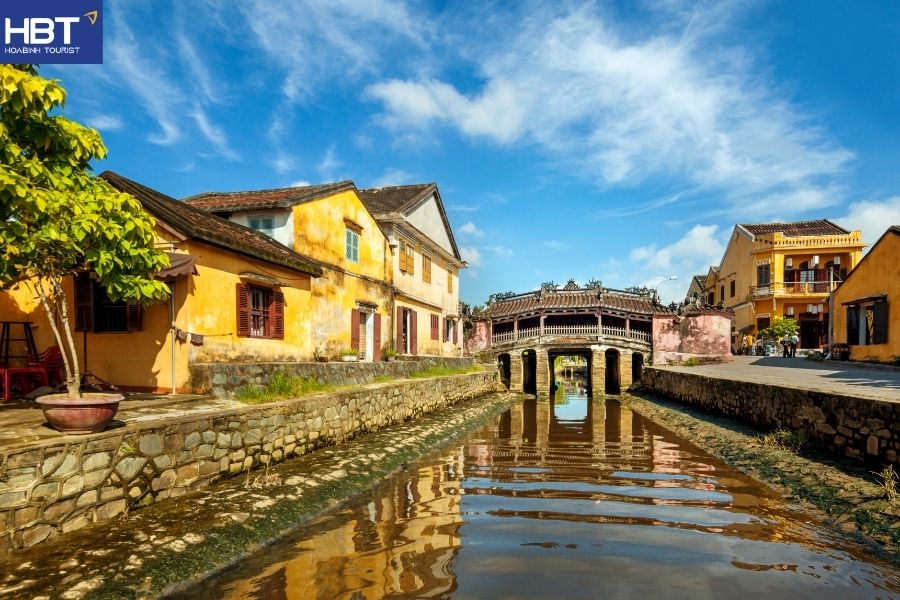
Set between Tran Phu and Nguyen Thi Minh Khai, Chua Cau bridges culture and history in Hoi An’s old quarter.
1.2. History of the Hoi An Bridge
Built in 1593–1595 by Japanese merchants, the Japanese Covered Bridge Hoi An once linked the Japanese and Chinese quarters of the old port city. Legend says it was intended to placate the mythical Namazu monster believed to cause earthquakes – its wooden beams serving as a seal over the creature’s back.
In 1653, locals built a shrine atop the bridge to venerate Bac De Tran Vu. By 1719, Lord Nguyen Phuc Chu inscribed the red plaque naming it “Lai Vien Kieu” (Bridge to Welcome Distant Guests), inviting merchants and travelers from afar to Hoi An’s vibrant trade networks.

Walking across Chua Cau feels like traversing centuries of trade, faith, and community spirit.
1.3. Restoration Timeline of the Hoi An Bridge
Chua Cau has undergone at least seven major restorations – in 1763, 1817, 1875, 1915, 1962, 1986, and 1996 – each driven by local authorities and heritage stewards to maintain its structure and charm.
The 1986 restoration was particularly transformative, restoring Chua Cau to its original pedestrian-only design and applying traditional materials, such as lacquered wood and yin-yang roof tiles. More recently, in 2023–2024, experts reinforced the aging foundations and replaced damaged beams – meticulously preserving original details while enhancing durability.
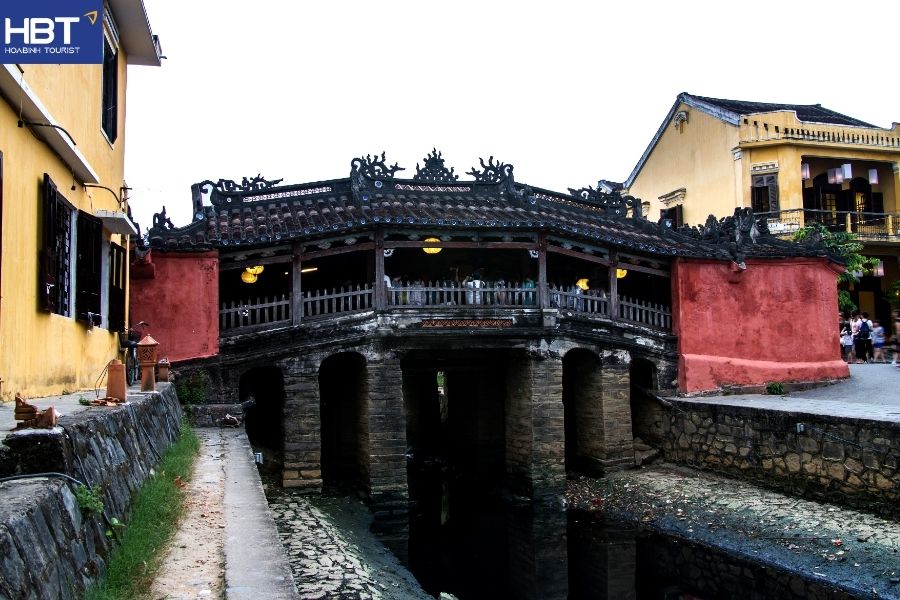
Careful restoration work has preserved Chua Cau’s antique elegance for future generations.
These enriched details on the Japanese Covered Bridge Hoi An – including its introduction, location, historical significance, and restoration efforts – provide a strong, SEO-optimized foundation for your article. Please let me know when you’d like me to proceed with the remaining headings.
2. Architectural Highlights of the Japanese Covered Bridge in Hoi An
This striking Hoi An bridge follows the “covered bridge with house-on-top” format – a wooden bridge beneath and a pagoda-like roof above. Its style merges Japanese simplicity, Vietnamese yin‑yang tiled roofs, and Chinese decorative motifs.
Inside, a shrine to Bac De Tran Vu stands behind a wooden door screened from the bridge deck. Animal statues – a monkey at one end and a dog at the other – honor the Year of the Monkey and Dog, representing construction years. They also serve as apotropaic guardians to the bridge.
The combination of high craftsmanship and symbolic art – like inlaid porcelain, enamel tiles, and carved wood – makes this bridge a masterpiece in miniature.

A pagoda roof, carved beams, and sculpted deities converge to embody Hoi An’s cultural spirit.
3. How to Get to the Japanese Covered Bridge in Hoi An
Want to walk to the iconic Hoi An bridge? Start at the Central Market in the Ancient Town, then stroll west along Tran Phu Street until you reach the historic Japanese Covered Bridge in Hoi An – also known as Chua Cau, where Tran Phu meets Nguyen Thi Minh Khai Street. The walk is scenic, lined with lantern-lit cafés, tailor shops, and centuries‑old houses. For a luxurious experience, choose HoaBinh Tourist’s VIP limousine service with door-to-door pick-up, and enjoy direct access to this symbol of cultural harmony.
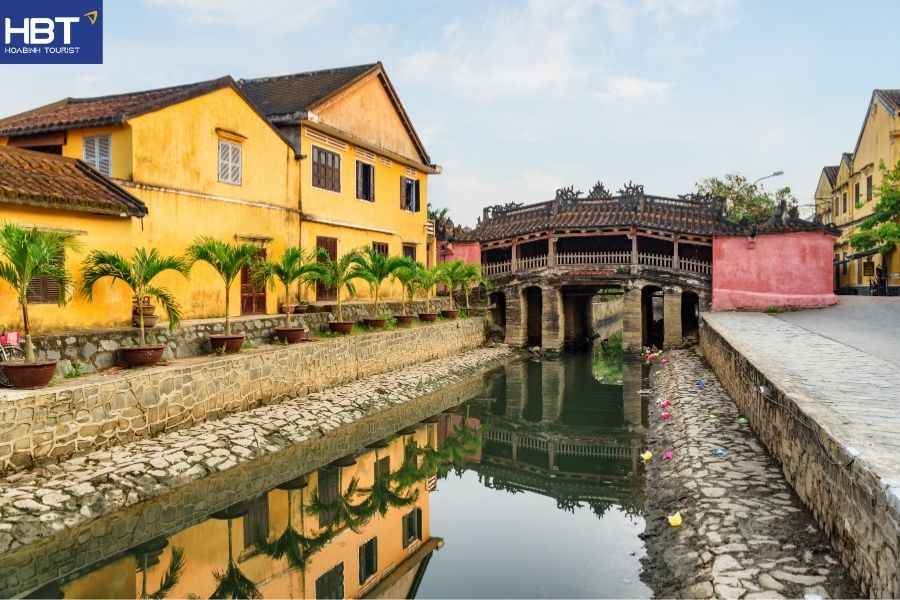
A short walk down Tran Phu Street brings you to Chua Cau’s glowing presence in Ancient Town.
4. Fun Facts About the Japanese Bridge You Might Not Know
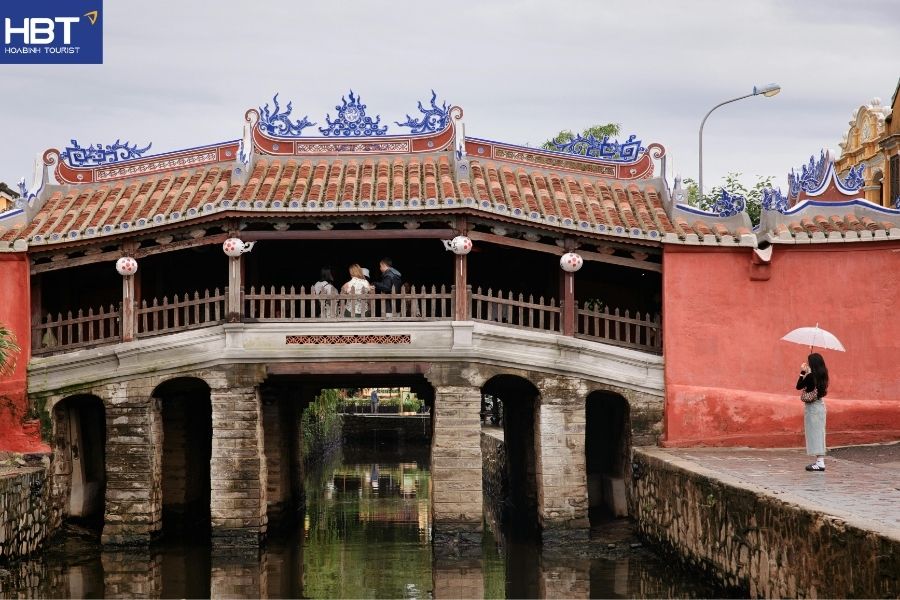
The Japanese Covered Bridge in Hoi An hides intriguing stories behind its wooden arch and pagoda roof. Though it’s one site, there’s more than meets the eye.
The Japanese bridge is featured on Vietnamese currency
The view of Chua Cau appears on the back of Vietnam’s 20,000 VND banknote – making the bridge in Hoi An a national icon celebrated on one of the most widely circulated bills.
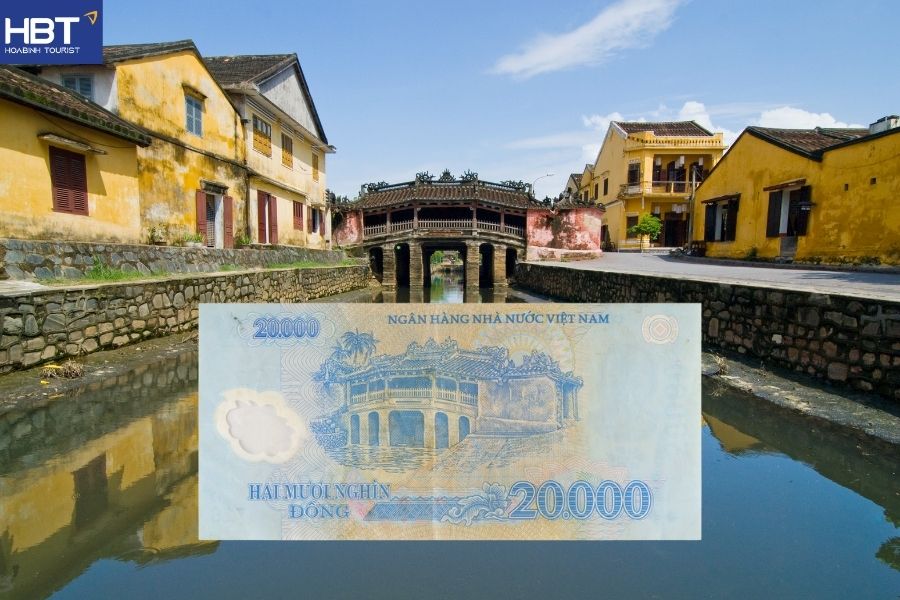
The image of the Japanese Bridge is printed on the Vietnamese currency.
The Japanese bridge is not a Buddhist temple
Though it houses a shrine, Chua Cau’s temple venerates Tran Vu Bac De, a guardian deity, not Buddha. Visitors often mistakenly assume it’s a Buddhist pagoda – but locals know it’s a spiritual symbol rooted in folk belief.
The bridge and the temple are two distinct parts
Chua Cau means “Pagoda‑Bridge”, but the original structure is the bridge, built in 1593–95. The temple was added about 60 years later by Chinese residents, creating the dual‑function design still seen today.
Discover more:
Best Food in Hoi An: 15 Must-Try Dishes for visitors
Top 10 Best Things to Do in Hoi An for an Unforgettable Trip
Vinpearl Hoi An: A Complete Guide to Visit, Food, and Travel
5. Tips for Visiting the Japanese Covered Bridge in Hoi An
Visiting Chua Cau during your Hoi An tours? Here’s how to make the most of it – and avoid the crowds:
- Best time to visit: Between 9 AM and 3 PM, the bridge is less crowded and ideal for photography or quiet reflection.
- Capture the golden glow: At dawn or dusk, lanterns illuminate the bridge – a magical time for romantic photos or meditative walks.
- Purchase the Old Town ticket: While entry to Chua Cau itself is free, you’ll need a 120,000 VND Ancient Town pass to explore nearby heritage sites.
- Cross barefoot (from the outside): Inside, local worshippers go barefoot. For respect, if you cross from the inside, consider removing your shoes briefly.
- Take your time at nearby sites: After visiting the bridge, walk to Phuc Kien Assembly Hall, Tan Ky Ancient House, or Quan Cong Temple. Each is a short stroll away and rich with cultural history.

Beyond Chua Cau, Hoi An’s ancient quarter pulses with stories in every courtyard and temple.
Some Hoi An tours you can refer to:
Journey Through Time at Hoi An’s Chua Cau – Seamless Tours by HoaBinh Tourist
For a truly seamless visit to Chua Cau and Hoi An, choose HoaBinh Tourist’s full-package service:
- Luxury transfers by 7–45 seat vehicles or VIP limousine, all the way to the bridge and back.
- Tickets inside Hoi An Ancient Town, including entry to Chua Cau, temples, historic houses, and optional cultural performances.
- Professional English-speaking guide sharing the bridge’s legends and UNESCO insights.
- Optional Vietnam Travel packages, fast flight booking, and 5-star hotels to complete your Vietnamese journey.
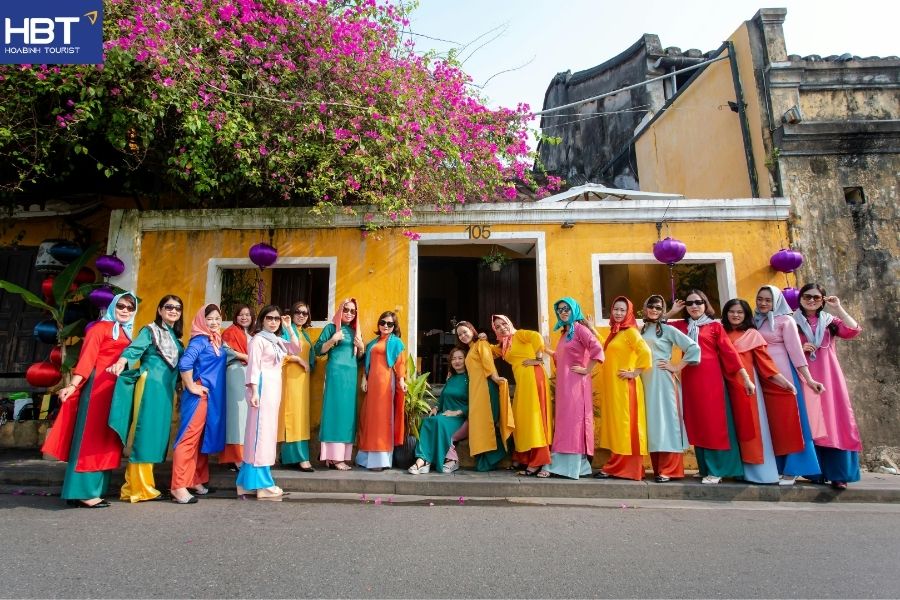
Let HoaBinh Tourist guide you through Hoi An’s lantern-lit streets and the timeless glow of Chua Cau.
——————————————————————————————
HOABINH TOURIST INTERNATIONAL – QUALITY MAKES REPUTATION!
✪ Hanoi: 29 Doan Thi Diem St., O Cho Dua Ward, Hanoi City, Vietnam
● Da Nang: 217 Tran Phu St., Hai Chau Ward, Da Nang City, Vietnam
● HCM: 5 Hoa Cau St., Cau Kieu Ward, Ho Chi Minh City, Vietnam
● Branch offices: Thailand, Singapore
📲 WhatsApp/Zalo/Viber/Hotline: (+84) 939 311 911 – (+84) 913 311 911 – (+84) 913 341 911
🌐 https://hoabinhtourist.com/en/
📧 info@hoabinh-group.com
